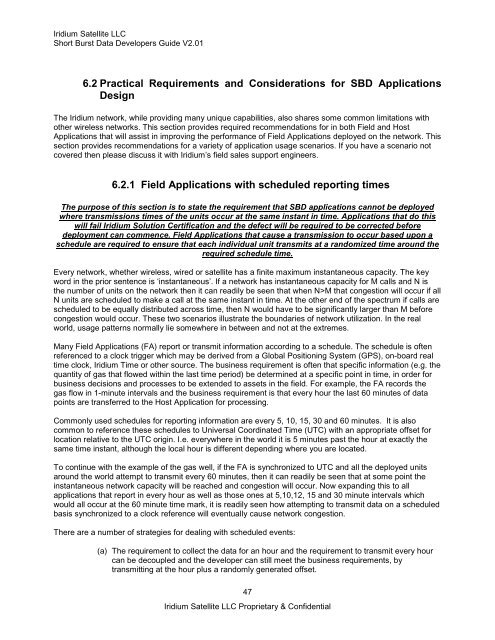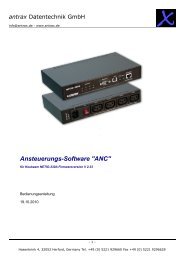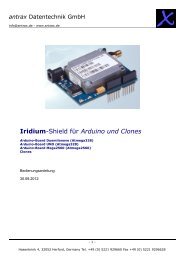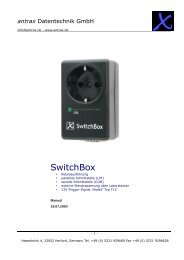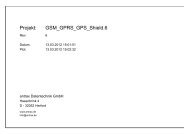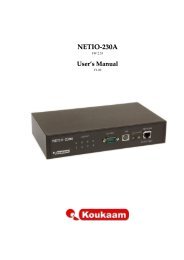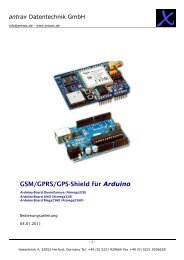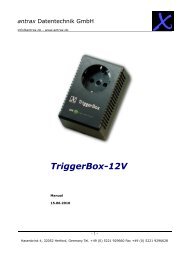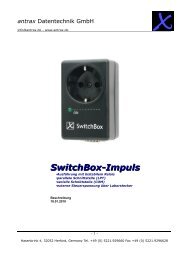Iridium Short Burst Data Service Developers ... - Discoverytelecom.eu
Iridium Short Burst Data Service Developers ... - Discoverytelecom.eu
Iridium Short Burst Data Service Developers ... - Discoverytelecom.eu
You also want an ePaper? Increase the reach of your titles
YUMPU automatically turns print PDFs into web optimized ePapers that Google loves.
<strong>Iridium</strong> Satellite LLC<br />
<strong>Short</strong> <strong>Burst</strong> <strong>Data</strong> <strong>Developers</strong> Guide V2.01<br />
6.2 Practical Requirements and Considerations for SBD Applications<br />
Design<br />
The <strong>Iridium</strong> network, while providing many unique capabilities, also shares some common limitations with<br />
other wireless networks. This section provides required recommendations for in both Field and Host<br />
Applications that will assist in improving the performance of Field Applications deployed on the network. This<br />
section provides recommendations for a variety of application usage scenarios. If you have a scenario not<br />
covered then please discuss it with <strong>Iridium</strong>’s field sales support engineers.<br />
6.2.1 Field Applications with scheduled reporting times<br />
The purpose of this section is to state the requirement that SBD applications cannot be deployed<br />
where transmissions times of the units occur at the same instant in time. Applications that do this<br />
will fail <strong>Iridium</strong> Solution Certification and the defect will be required to be corrected before<br />
deployment can commence. Field Applications that cause a transmission to occur based upon a<br />
schedule are required to ensure that each individual unit transmits at a randomized time around the<br />
required schedule time.<br />
Every network, whether wireless, wired or satellite has a finite maximum instantaneous capacity. The key<br />
word in the prior sentence is ‘instantaneous’. If a network has instantaneous capacity for M calls and N is<br />
the number of units on the network then it can readily be seen that when N>M that congestion will occur if all<br />
N units are scheduled to make a call at the same instant in time. At the other end of the spectrum if calls are<br />
scheduled to be equally distributed across time, then N would have to be significantly larger than M before<br />
congestion would occur. These two scenarios illustrate the boundaries of network utilization. In the real<br />
world, usage patterns normally lie somewhere in between and not at the extremes.<br />
Many Field Applications (FA) report or transmit information according to a schedule. The schedule is often<br />
referenced to a clock trigger which may be derived from a Global Positioning System (GPS), on-board real<br />
time clock, <strong>Iridium</strong> Time or other source. The business requirement is often that specific information (e.g. the<br />
quantity of gas that flowed within the last time period) be determined at a specific point in time, in order for<br />
business decisions and processes to be extended to assets in the field. For example, the FA records the<br />
gas flow in 1-minute intervals and the business requirement is that every hour the last 60 minutes of data<br />
points are transferred to the Host Application for processing.<br />
Commonly used schedules for reporting information are every 5, 10, 15, 30 and 60 minutes. It is also<br />
common to reference these schedules to Universal Coordinated Time (UTC) with an appropriate offset for<br />
location relative to the UTC origin. I.e. everywhere in the world it is 5 minutes past the hour at exactly the<br />
same time instant, although the local hour is different depending where you are located.<br />
To continue with the example of the gas well, if the FA is synchronized to UTC and all the deployed units<br />
around the world attempt to transmit every 60 minutes, then it can readily be seen that at some point the<br />
instantaneous network capacity will be reached and congestion will occur. Now expanding this to all<br />
applications that report in every hour as well as those ones at 5,10,12, 15 and 30 minute intervals which<br />
would all occur at the 60 minute time mark, it is readily seen how attempting to transmit data on a scheduled<br />
basis synchronized to a clock reference will eventually cause network congestion.<br />
There are a number of strategies for dealing with scheduled events:<br />
(a) The requirement to collect the data for an hour and the requirement to transmit every hour<br />
can be decoupled and the developer can still meet the business requirements, by<br />
transmitting at the hour plus a randomly generated offset.<br />
47<br />
<strong>Iridium</strong> Satellite LLC Proprietary & Confidential


